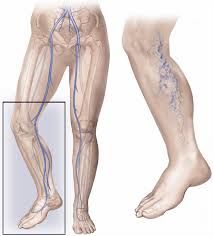What causes Varicose Veins?
Varicose veins are enlarged dark-coloured veins that occur when blood backs up and causes damage to the veins. Often found in legs, varicose veins can cause aching, itching and swelling. They are quite common and can affect both men and woman. Unfortunately, when it comes to the cause there is no simple or easy answer. This is due to a whole variety of factors that can come into play and change from person to person.
Risk factors include:
- Family history: for some people, varicose veins can simply be inherited from their parents
- Gender: while both men & woman can get varicose veins, they’re more common in women. Women of any age can get varicose veins, but even more so when going through menopause.
- Weight gain: Obesity, pregnancy or simply gaining weight may increase your risk
- Leg injuries: This can relate to varicose veins, however, we can’t directly point a finger at this in isolation as a cause
Myths
Making lifestyle changes won’t help
Although some people’s leg veins can simply be caused by genetics, it is important to make healthy lifestyle choices to help. Being physically active and keeping at a healthy weight are two of the best ways to prevent and improve varicose veins. Other small lifestyle changes can also make a big difference, such as wearing compression stockings, performing calf-strengthening exercises and elevating your legs
Standing up while working causes varicose veins
There is common debate whether the time spent on your feet actually causes varicose veins. The truth is, people tend to notice their symptoms associated with varicose veins when standing for prolonged periods more so than when sitting. That’s not to say you should sit down all the time. In fact, being active and on your feet is usually great for your veins.
Varicose veins can be caused by running or jogging
Exercising is good for your circulation. When you walk, run or jog, your calf muscles work harder and more blood gets pumped through your leg to your heart. While you may feel symptoms, such as an ache after a jog, it’s not the jogging that’s causing your varicose veins. The physical exercise is actually doing you some good. If you want to be extra safe, wear compression stockings while exercising and elevate your legs while you cool off after a workout.
Treatments
There are many available treatment options to consider including sclerotherapy, electrodessication, laser therapy and surgery. Ask your local GP for more information. However, if you feel as though you aren’t ready for these you can try making improvements to your lifestyle first. Your physio can help you with modifications to your existing exercise routine or get you started with a suitable program to help reduce your aches and pains associated with varicose veins and hopefully improve or stop varicose veins from forming.

